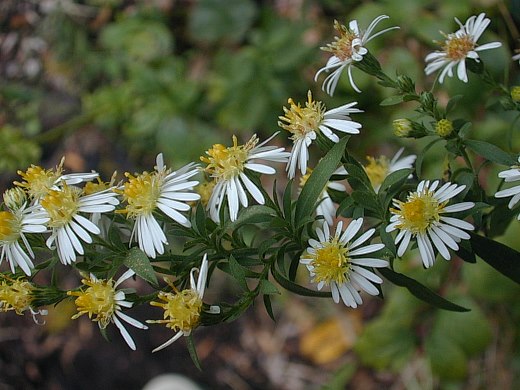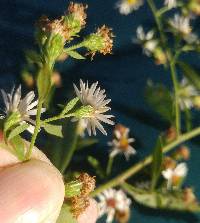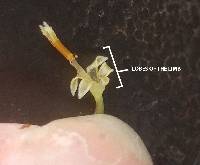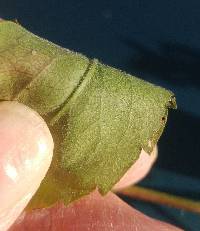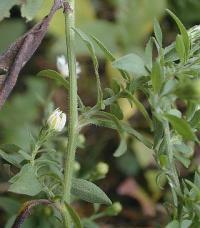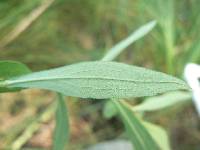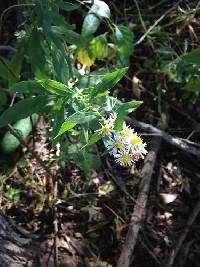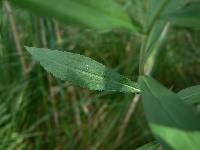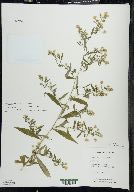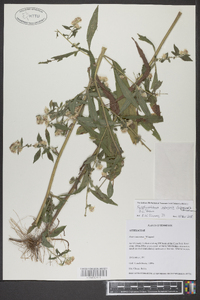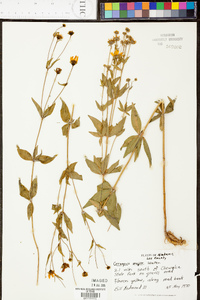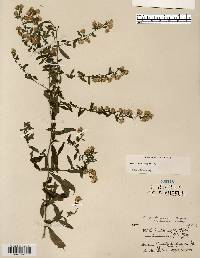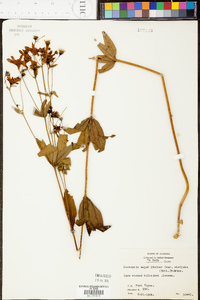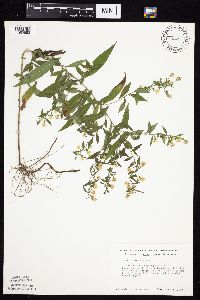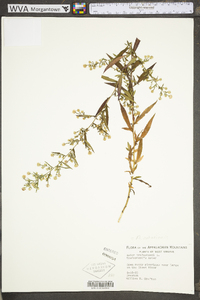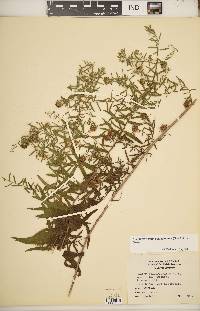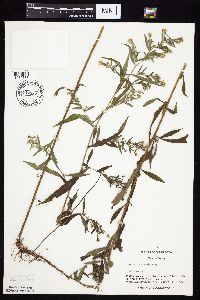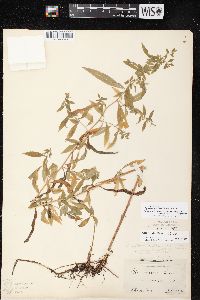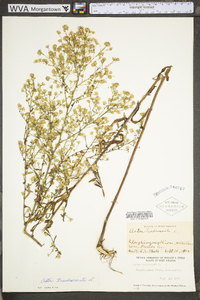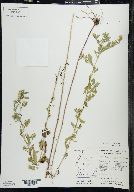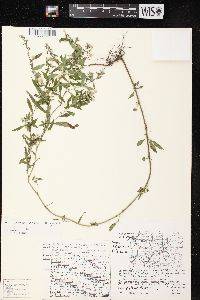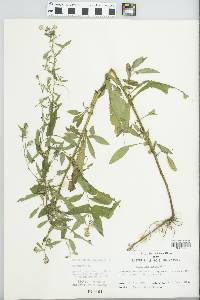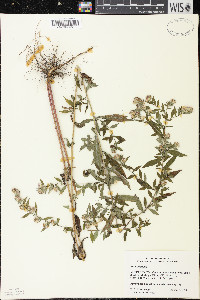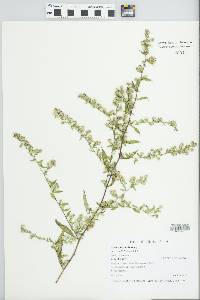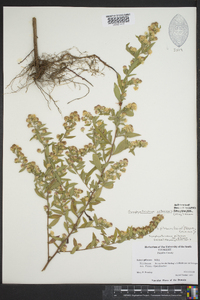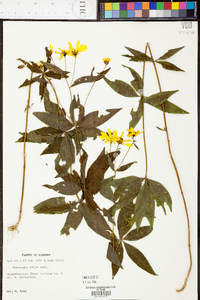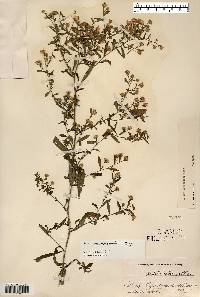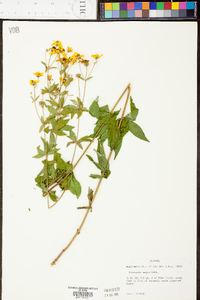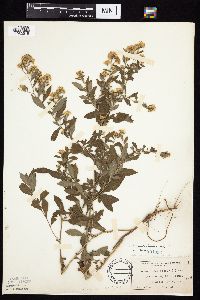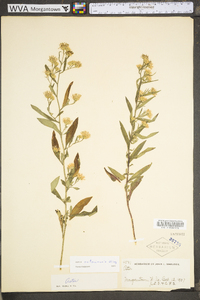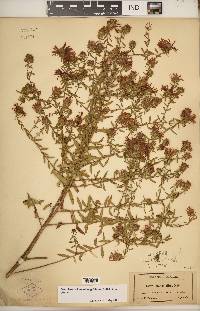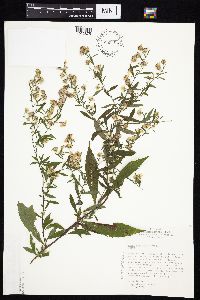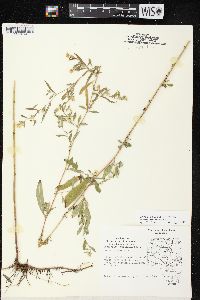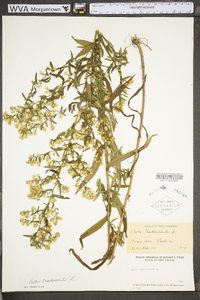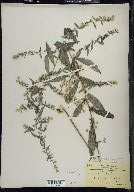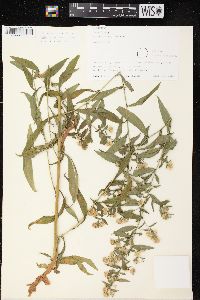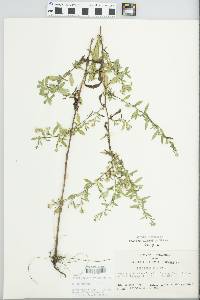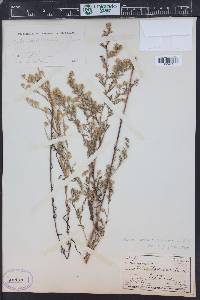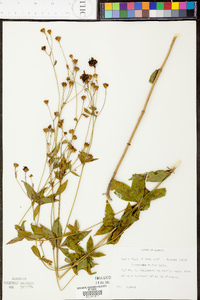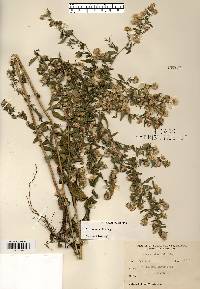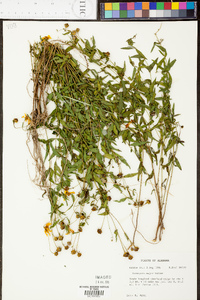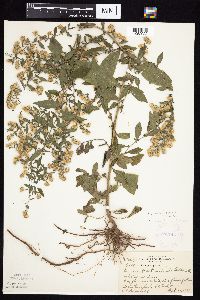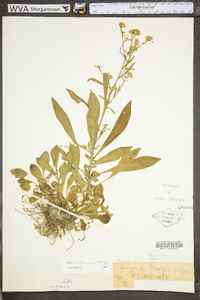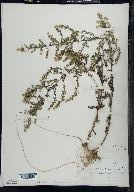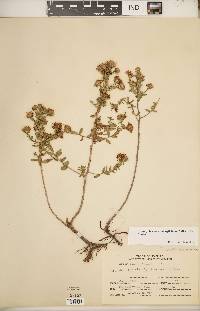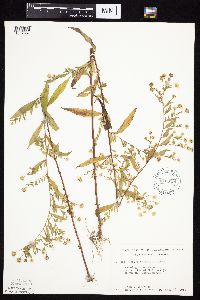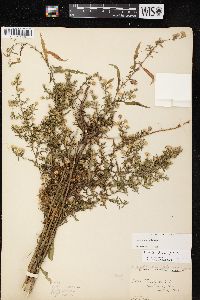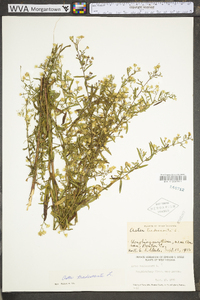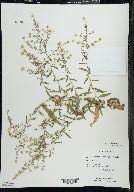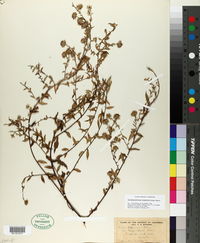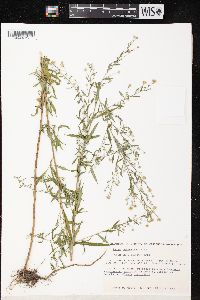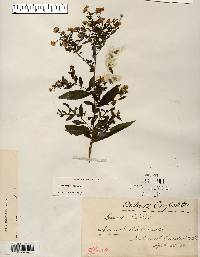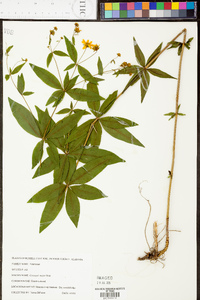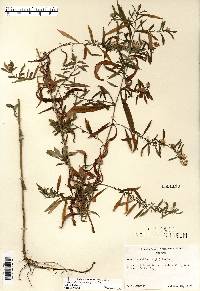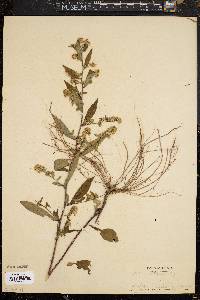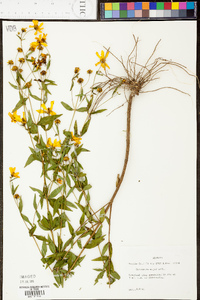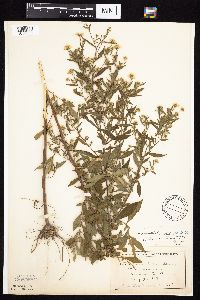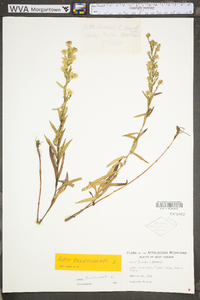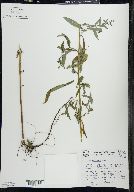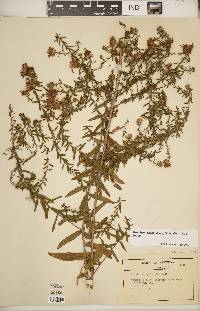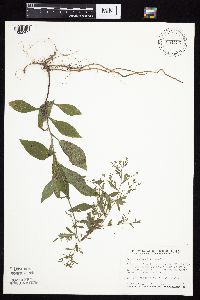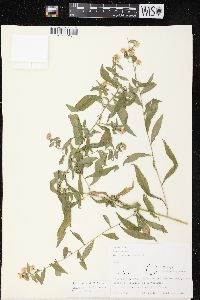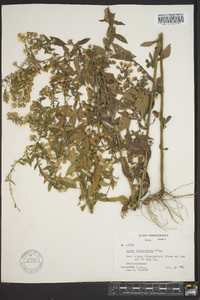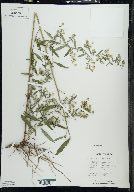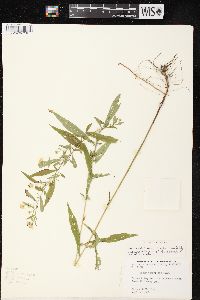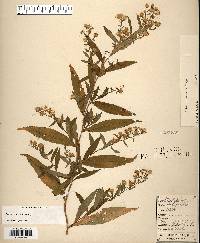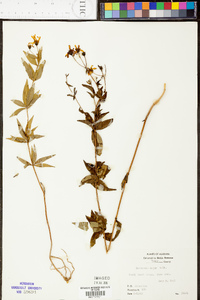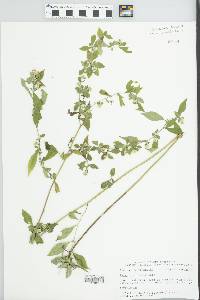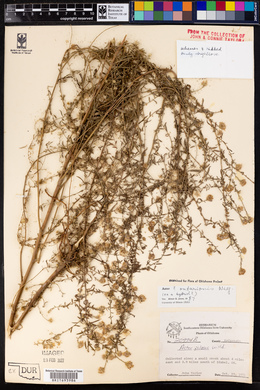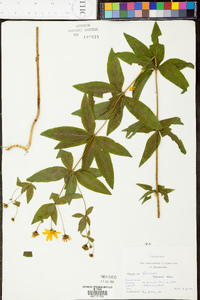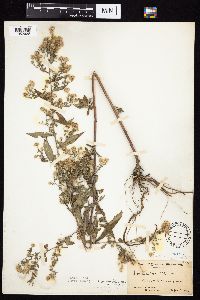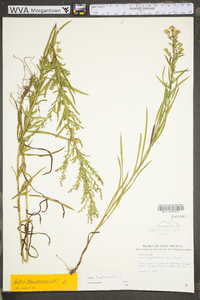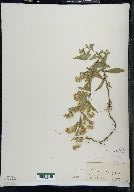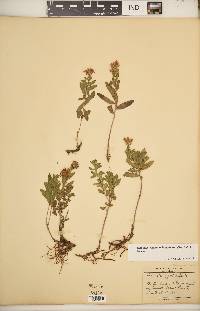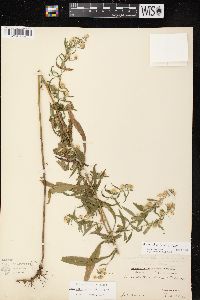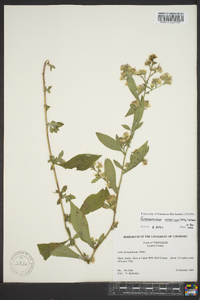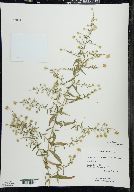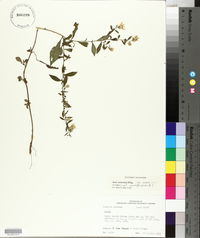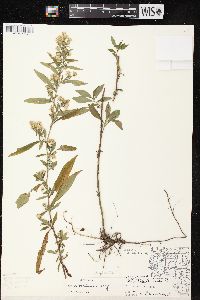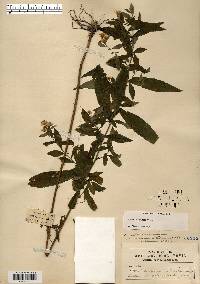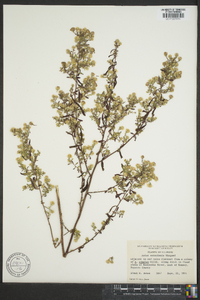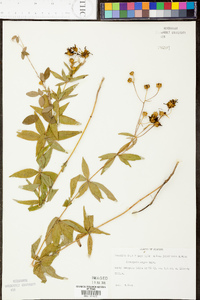Symphyotrichum ontarionis
|
|
|
|
Family: Asteraceae
Ontario American-Aster, more...bottomland aster
[Aster ontariensis, moreAster ontarionis Wiegand] |
Perennials, 20-120 cm, colonial; long-rhizomatous. Stems 1-(2-3), ascending to erect (straight), proximally glabrate, distally uniformly villous or hirsute, or glabrous (var. glabratum). Leaves thin, margins scabrous, apices mucronate, abaxial faces usually sparsely to densely strigose or strigillose, sometimes glabrous (var. glabrum), adaxial usually strigose or scabrous, sometimes glabrate or glabrous (var. glabrum); basal withering by flowering, petiolate to subpetiolate (petioles narrowly winged, ciliate, bases sheathing), blades spatulate to oblanceolate-obovate, 10-40 × 5-10 mm, bases attenuate, margins crenate-serrate, apices acute to rounded; proximalmost cauline usually withering by flowering, petiolate or sessile (petioles narrowly winged, ± clasping), blades ovate or lance-ovate to elliptic-lanceolate or oblanceolate, 20-80(-12) × 5-35 mm, progressively reduced distally, bases attenuate to cuneate, margins serrate (sometimes coarsely) to crenate-serrate, apices acute to acuminate or short-caudate; distal sessile, blades elliptic-lanceolate to oblanceolate or lanceolate, (6-)10-80+ × 2-25 mm, progressively reduced distally, bases cuneate, margins entire to serrulate, apices acute to acuminate. Heads in ample, open, paniculiform arrays, branches ± ascending or divaricate to long-arching, ± secund. Peduncles subsessile or 2-10(-20) mm, ± pilose, bracts 1-5, linear-lanceolate, pilose, grading into phyllaries. Involucres campanulate, 3-5.5 mm. Phyllaries in (3-)4-6 series, unequal, appressed or ± spreading, linear-obovate (outer) to oblong-lanceolate to linear (inner), bases indurate 1 / 3 - 3 / 4 , margins narrowly scarious to apices, erose, hyaline, ciliate, green zones lanceolate, apices acute to acuminate, mucronulate, faces (outer) sparsely pilose or glabrous (var. glabratum), (inner) glabrous. Ray florets (10-)15-26; corollas usually white, rarely pinkish or light purple to blue, laminae 3.5-5.5(-8) × 0.5-1.5 mm. Disc florets 12-25; corollas cream or light yellow turning magenta or purple (ampliate), 2.5-4(-4.5) mm, tubes shorter than funnelform throats, lobes slightly spreading to reflexed, lanceolate, 0.7-1.1 mm. Cypselae gray or tan, oblong-obovoid, sometimes ± compressed, 1.2-1.8(-2) mm, 3-5-nerved, faces strigillose; pappi whitish to white, 3-3.5 mm. Symphyotrichum ontarionis is often confused with S. lateriflorum, from which it can be distinguished by its shorter disc corolla lobes and abaxial leaf faces either moderately to densely hairy or glabrous to glabrate (var. glabratum), and without hairs along midveins (as is typical of S. lateriflorum).
Similar to no. 16 [Aster lateriflorus (L.) Britton], but with long, creeping rhizomes, and often verging toward no. 12 in habit; stem uniformly spreading-puberulent, at least above; lvs uniformly (sometimes sparsely) puberulent beneath, or sometimes more densely so and almost villous along the midrib, more scabrous or subglabrous above; invol glabrous or sometimes puberulent; lobes of the disk-cors comprising 45-65% of the limb; 2n=32, 48. River bottom-lands; n. N.Y. to Ky., Tenn., and n. Miss., w. to Minn., S.D., and Okla. (A. missouriensis, a preoccupied name) Gleason, Henry A. & Cronquist, Arthur J. 1991. Manual of vascular plants of northeastern United States and adjacent Canada. lxxv + 910 pp. ©The New York Botanical Garden. All rights reserved. Used by permission. |

